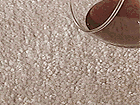You Can Relax, Knowing Your Carpet is Clean and.... Your Home is Healthy!

740-927-9452
Carpet Cleaning
Upholstery Cleaning
Tile / Vinyl Cleaning
Pet Problem Solvers
Area Rug Cleaning
Odor Restoration
Exterior Power Washing
Locally Owned & Operated
Serving Pataskala
and Surrounding Areas
Carpet and Fabric
Protector Applications

The average carpet is replaced every 10.2 years, even though it
begins to show signs of poor care after only two to five years. The
carpet industry refers to this as “Uglying Out”.
(Notice, they do not call it “Wearing Out”)
This condition typically affects areas called traffic lanes and in
front of the furniture first, causing these areas to look dull and
soiled.
Today’s lighter colored carpets require regular professional care to
keep them looking great until they truly wear out.

Unfortunately there is probably as much confusion in the carpet cleaning industry about carpet protectors as there is about cleaning. Uneducated, uninformed, and sometimes downright unscrupulous carpet cleaners cause a great deal of confusion by giving out false information or intentionally misrepresenting the product.
A nylon stain-resist carpet is made with two protective properties: The first is an acid dye blocker that is basically a clear dye that fills the extra dye sites in a fiber. This helps to keep "foreign" dyes (such as red dye in a beverage) from penetrating the carpet fiber. The second property is called a "fluorochemical". It is commonly known as 3M Scotchgard® or DuPont Teflon®. This treatment helps keep spillage from actually getting to the acid dye blocker, but its biggest job is to resist dry soil.
By resisting dry soil, less soil bonds to the carpet, therefore being picked up by your vacuum or cleaning. Making sure that you have a sufficient amount of protector on your carpet will help keep the soil from bonding to the carpet. Once it bonds to the carpet, it acts like sandpaper on your traffic area.
Once the traffic area yarns are broken down, there is no way to bring them back to their original state.
Two primary ways that factory protector is removed from a carpet
1. Regular foot traffic. Over a period of 6 months to 2 years depending on the traffic, a
significant amount of protector can be removed from your traffic areas and needs to be reapplied.
2. High alkaline cleaner. Uneducated, uninformed, and sometimes downright unscrupulous
carpet cleaners use harsh chemicals on the carpet that will strip it’s protection. If one of these
rascals has been in your house, you may want to have the carpet re-protected.
Five Reasons You Should Always Get Carpet Protector
1. Reduces permanent stain. A great looking carpet can be ruined by an ugly spot. Unprotected carpet doesn’t
repel spillage as well as protected carpet. Being able to remove spots and spills more effectively, you can
avoid permanent staining.
2. Helps save your traffic areas from becoming destroyed. Traffic area soil is very abrasive and cuts carpet
yarns like a knife. This damaging soil can easily bond to an unprotected carpet. By applying protector, you
will increase the life of your carpet dramatically. When you vacuum your protected carpet the soils will
release from the carpet pile much more effectively.
3. Make spots easier to remove. The easier a spot is to remove, the less cleaner you will have to use. The less
agitation you will have to use, and the less time it will take. Many spots can be removed easily with just
water.
4. Makes your next professional cleaning more effective. Having protector applied to your carpet will enhance
your next cleaning. More soil will be removed the next time your carpeting is professionally cleaned.
5. Helps avoid costly service calls. Although you want to call us out to handle any spot you cannot remove
immediately, carpet protector helps you remove more spots than you could without protector. You may be
able to save a minimum charge by removing the spot yourself.
Why Carpet Protection Really Works!
Fibers from the Factory, are Fresh, New and Protected
This is similar to what your carpet fibers look like when they are new and
just arrived from the carpet mill. This factory coating is what makes liquids
spills repel and also keeps your carpet from staining.

Carpet Fibers Under Attack By Microscopic Soil and Oxidation

Over time, foot traffic on your carpet causes soil to become ground in and
trapped in your carpet’s fibers. To the naked eye, dirt has a smooth look to it.
But under a microscope, soil is revealed to be an abrasive with sharp, jagged
edges.
This soil acts like just like sand paper, cutting into the
protector, exposing the fibers and damaging them.
Once the fibers are exposed, spills and soil can penetrate into them. And
without this protected surface, your carpet will “ugly out” faster.
It can also expose the fibers to the possibility of permanent staining -
eventually leading to it wearing out